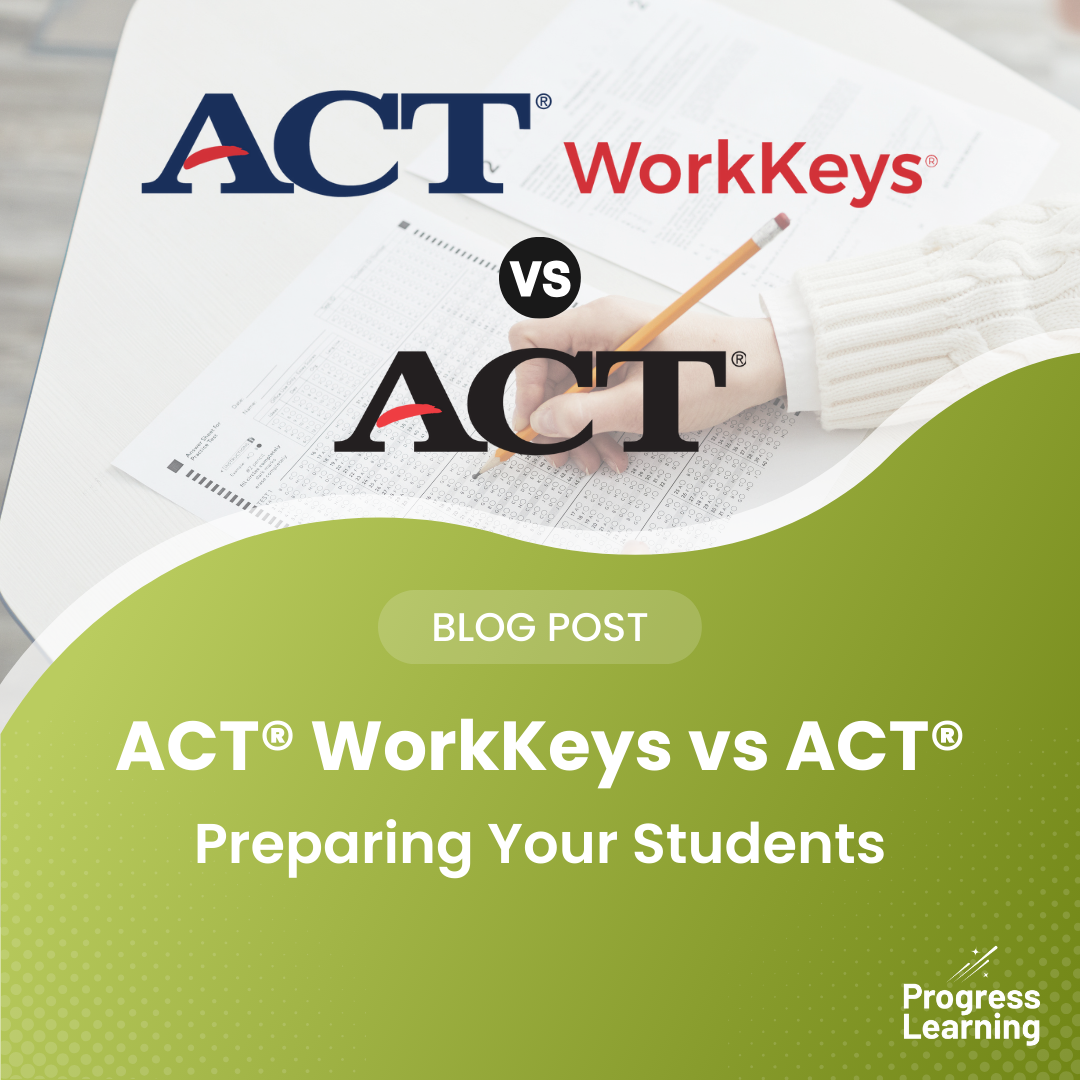2025 ACT® Test Changes: Preparing Your Students for the Enhanced ACT®
The ACT® is evolving in 2025—and these updates are designed with students in mind. Shorter test times, fewer questions, and more time per item aim to reduce pressure and create a more focused testing experience. But what do these changes actually mean for your students, your classrooms, and how you prepare for college readiness exams?
Let’s break it down.
Where the ACT® Stands in 2025: Format, Flexibility, and Sections
As of 2025, the ACT® offers more flexibility than ever before. Students can now:
- Choose between paper and online test formats
- Opt into or out of the Science and Writing sections
- Take a shorter overall test with fewer questions
- Benefit from more time per question
Quick Overview of the 2025 ACT® Format
| Section | Time (Minutes) | Number of Questions |
|---|---|---|
| English | ~40 | ~75 (unchanged) |
| Math | Shortened | Now 4 choices per question |
| Reading | Shortened | Shorter passages |
| Science | Optional | Still available for STEM-focused students |
| Writing | Optional | 40 minutes |
What’s Changing in 2025?
The ACT®’s enhancements are all about personalization and performance. Here’s a breakdown of what’s new:
- Shorter Test Overall
The ACT® is now 75 minutes shorter and includes 44 fewer questions, making it more manageable and less draining for students. - More Time Per Question
With fewer questions overall, students have more time to think critically and answer each question with greater care and clarity. - Math Answer Choices Reduced from 5 to 4
This change reduces decision fatigue and brings consistency to the test format, as other sections already used four options. - Shorter Reading Passages
Passages are now shorter while retaining the same complexity and rigor—helping students maintain focus and reduce fatigue. - Science and Writing Now Optional
Students can choose whether to include these sections based on their college goals, major interests, or strengths. STEM-bound students may still benefit from the Science section. - Paper or Online Format
Students can take the ACT® on paper or digitally—allowing them to choose the format that fits their testing preferences and comfort level.
These changes allow students to tailor the ACT® to their strengths and future plans while reducing unnecessary stress during test day.
What’s Staying the Same?
While the ACT® is evolving, several key features remain unchanged:
- Core Skills and Content Areas
The same core subjects—English, Math, Reading, and optional Science and Writing—remain part of the test. - ACT® Score Scale (1–36)
The scoring system remains unchanged, ensuring continuity in how colleges interpret results. - Superscoring Support
ACT® still allows students to combine their best section scores across multiple test attempts for a stronger composite score. - Benchmark Alignment for College Readiness
The ACT® continues to measure the skills needed for success in first-year college coursework. - Paper and Digital Options
Students can still choose their preferred test format.
By preserving these foundational elements, the ACT® ensures that test scores remain consistent and meaningful for colleges and educators.
ACT® vs. SAT® in 2025: How They Compare
Both the ACT® and SAT® have undergone changes in recent years, but they’ve taken different paths. Here’s how the ACT® stacks up against the SAT® in 2025:
| Feature | ACT® (2025) | SAT® (2025) |
|---|---|---|
| Format | Paper or online | Fully digital and adaptive |
| Optional Sections | Science and Writing | None |
| Test Length | Shortened by 75 minutes | Approx. 2 hours total |
| Scoring | Composite 1–36 | Composite 400–1600 |
| Superscoring | Supported | Supported |
| Science Section | Optional, dedicated section | Integrated throughout test |
| Writing Section | Optional | Removed |
| Customization | High—students choose format + sections | Moderate—no optional sections |
For students who want flexibility, a science showcase, or a familiar testing environment, the ACT® may be the stronger fit in 2025.
How Do These Changes Affect Instruction and Test Prep?
For educators, the streamlined ACT® offers both clarity and opportunity:
- More Focused Test Prep:
With optional sections, schools can align instruction based on student goals and college admissions requirements. - Reduced Emphasis on Speed Drills:
More time per question allows educators to shift toward deeper comprehension, analysis, and skill mastery. - Opportunity for Strategy:
Teachers can coach students on whether to take optional sections based on career interests, strengths, or application requirements.
These changes make it easier for educators to individualize prep, target specific skill gaps, and reduce stress for students navigating high-stakes testing.
How Progress Learning Supports Your ACT® Prep in 2025
The best news? You don’t need to start from scratch. Progress Learning’s ACT® and PreACT® tools are already aligned to the new format.
- Updated Practice Tests: Reflect new timing, question types, and section structure
- Individualized Study Plans: Support personalized student learning paths
- Built-in Remediation Tools: Quickly target learning gaps with adaptive support
- Data-Driven Reporting: Monitor progress and adjust instruction with ease
Whether your students are taking the full ACT® or opting out of certain sections, Progress Learning gives educators everything they need to prepare effectively—with no extra prep or rework.
Watch Our Recent Webinar: The ACT® Is Changing—Here’s What to Know
Want more information on the 2025 ACT® changes and how to adjust your instruction? Watch the recording of our recent webinar, The ACT® Is Changing: Here’s What to Know. In this 30-minute session, test prep expert Matt Klinestiver walks you through:
- A breakdown of the ACT®’s structural, content, and scoring changes
- How these changes affect college readiness instruction
- What educators can do now to prepare students for success
- Tips for using data to drive targeted instruction and build student confidence
Missed the live webinar? Sign up below to be notified about upcoming webinars, blogs, and more.


